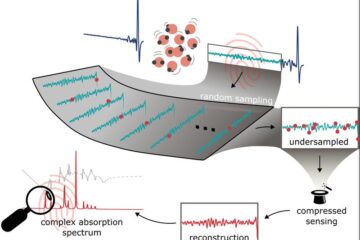Discovery of variations in resistance to sulfadoxine across Africa

Researchers have discovered that malaria parasites in east and west Africa carry different resistance mutations, which suggests that the effectiveness of sulfadoxine as an antimalarial drug may vary across Africa.
The findings have implications for the manner in which malaria control campaigns are carried out, and suggest that coordinating efforts between parts of Africa that share similar patterns of resistance is likely to be more effective than working in isolation in each country.
Plasmodium falciparum (P. falciparum) a mosquito-borne parasite that causes malaria, kills nearly one million people a year, mostly in sub-Saharan Africa. Until recently, treatment in Africa relied on chloroquine and sulfadoxine-pyrimethamine. Unfortunately, parasites have developed resistance to both these drugs by acquiring 'resistance mutations', genetic changes that prevent the drugs from killing them.
Scientists have discovered that the mutations that caused resistance to chloroquine and pyrimethamine originated in Asia and spread into Africa in the late 1970s and early 1980s respectively. These mutations are now common across Africa and it is no longer possible to determine how they spread across the continent. However, the mutations that cause resistance to sulfadoxine only began to emerge in the mid-1990s, and have not yet spread evenly across Africa.
A study published today in PloS Medicine, and led by Dr. Cally Roper of the London School of Hygiene & Tropical Medicine, used genetic methods to characterise how resistance to sulfadoxine has spread across Africa, with a view to determining its geographical origins in order to help improve measures aimed at controlling the spread of drug-resistant P. falciparum.
The team analysed blood samples collected from patients with malaria in various African countries, and searched the scientific literature for other similar studies. They discovered five major variant genetic sequences (three of which contain mutations that confer various degrees of resistance to sulfadoxine in laboratory tests) to be present in Africa, each with a unique geographical distribution. In particular, the data showed that malaria parasites in east and west Africa carry different resistance mutations.
The findings show that sulfadoxine-resistant parasites have emerged independently at multiple sites in Africa, and that the molecular basis for sulfadoxine resistance is different in east and west Africa. This latter result may have clinical implications because it suggests that the effectiveness of sulfadoxine as an antimalarial drug may vary across the continent. They also suggest that economic and transport infrastructures may have played a role in governing recent parasite dispersal across the continent through their influence on the volume of human migration.
Dr. Roper comments: 'Our findings suggest that the effectiveness of sulfadoxine as an antimalarial drug may vary across Africa. They also point to the need to co-ordinate malaria control campaigns across socioeconomically linked areas in Africa, rather than focusing solely on national territories, in order to more effectively reduce the malaria burden in the continent'
Media Contact
More Information:
http://www.lshtm.ac.ukAll latest news from the category: Life Sciences and Chemistry
Articles and reports from the Life Sciences and chemistry area deal with applied and basic research into modern biology, chemistry and human medicine.
Valuable information can be found on a range of life sciences fields including bacteriology, biochemistry, bionics, bioinformatics, biophysics, biotechnology, genetics, geobotany, human biology, marine biology, microbiology, molecular biology, cellular biology, zoology, bioinorganic chemistry, microchemistry and environmental chemistry.
Newest articles

How evolution has optimised the magnetic sensor in birds
The magnetic sense of migratory birds is probably based on the protein cryptochrome 4, and a genetic study has now provided further support for this theory. A team of researchers…

Molecular Fingerprint Beyond the Nyquist Frequency
Ultrafast laser spectroscopy allows the ascertainment of dynamics over extremely short time scales, making it a very useful tool in many scientific and industrial applications. A major disadvantage is the…

High-energy-density aqueous battery based on halogen multi-electron transfer
Traditional non-aqueous lithium-ion batteries have a high energy density, but their safety is compromised due to the flammable organic electrolytes they utilize. Aqueous batteries use water as the solvent for…





















